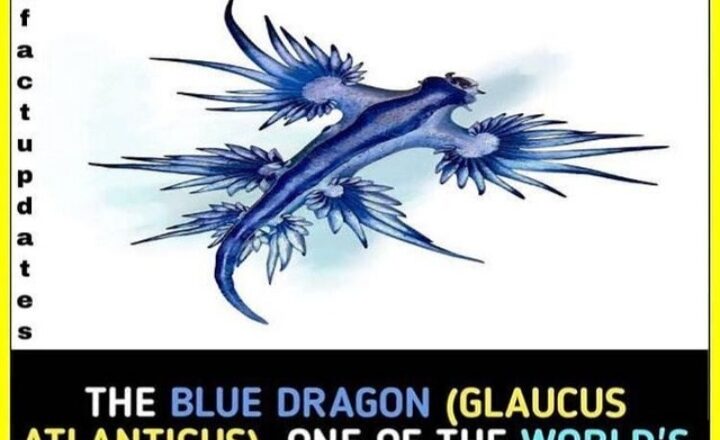Living organism or work of art? Is there a difference? In the case of the blue glaucus, also known as the blue dragon, the answer is no. The blue dragon (Glaucus atlanticus) is a type of mollusk, or sea slug, known as a nudibranch. It can be found on the surface of the Atlantic, Pacific, and Indian oceans in temperate and tropical waters throughout the world.
This ornate creature rarely grows larger than three centimeters long or just over one inch. The blue dragon floats on its back (an air bubble in its stomach helping it maintain buoyancy), its brightly colored underbelly exposed to airborne predators. The blue side of its body acts as camouflage against the backdrop of ocean waves, while the pearlized silver/grey side blends in with the bright sea surface, hiding it from predators below.
Glaucus atlanticus feed on other aquatic creatures – that is, those that live near the water’s surface. Its favorite meals, made up primarily of venomous siphonophores, sound like mystical creatures themselves, including the by-the-wind-sailor (Velella velella); the blue button (Porpita porpita); the violet snail, and the dangerously venomous Portuguese man o’ war. The blue dragon stores the man o’ war’s stinging nematocysts within its finger-like appendages, making itself equally venomous to predators. One sting from this little guy can lead to nausea, pain, vomiting, acute allergic contact dermatitis, and post-inflammatory hyperpigmentation.
Should you ever come in contact with one, look, admire, be appropriately awed, but do not touch!
Although blue dragons live on the open ocean, they sometimes wash up onto the shore, making for a spectacular – if small – sight against the beige sand. Beach-going humans may be compelled to pick the tiny beauties up for a closer look, but doing so can result in a painful sting.
